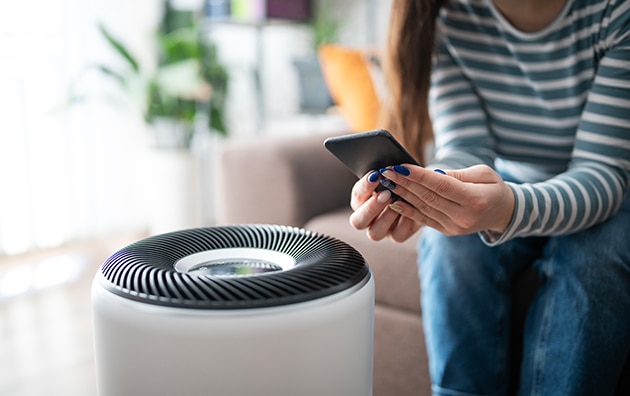Tips to Maintaining Proper Humidity in Your Home
Information for Homeowners


Over the last few years, changes in building codes have placed an ever-increasing emphasis on energy efficiency in residential construction. As a result, homes are now being built with higher insulation values and lower air leakage rates. While these changes are beneficial in terms of energy usage, a more airtight building envelope will require the homeowner to manage humidity levels to prevent moisture issues.
While some humidity inside the home is beneficial in terms of the health and comfort of the homeowners, as well as for the performance and well-being of interior finishes such as hardwood flooring, too much humidity can cause issues within the home. Occupant comfort is generally in the range of 30-50% relative humidity. Your home can experience humidity levels above and below this range throughout the year, and throughout the day, depending on various factors. Therefore, the humidity level inside the home must be constantly monitored and adjusted to ensure the long-term performance of the home.
Sources of Moisture
There are numerous sources of humidity within the home. Many of the materials used in the construction of the home (such as concrete foundations, basement floor slabs, framing components, paints, drywall mud, sealant, etc.) have moisture in them that will add humidity to the home while they cure or dry. While these sources of humidity will gradually decrease over time, the one constant variable and largest source of indoor humidity is the occupants of the home itself.
The average family of four doing basic household activities such as bathing and cooking, can introduce approximately 75 litres of moisture into the air in the home every week.
Environmental conditions will also add various levels of humidity depending on the home’s geographic location, climate, season and weather. Plumbing, roof and wall leaks will also add a significant amount of moisture into the home.
Symptoms of Excessive Humidity
During the colder months, there are various symptoms that would indicate there is excessive humidity in the home. These symptoms are more apparent during this time as the home is generally sealed more tightly and the outdoor temperatures are lower. These symptoms can include:
- Condensation or ice build-up on the lower portions of the windows.
- Condensation or frost build-up on the lower portions of exterior doors and on door hardware.
- Condensation on exterior walls, particularly in colder corners with limited ventilation.
Why It Happens
The occurrence of frost, ice and condensation on the interior of the home during colder months is related to two variables: relative humidity and dew point. A complex formula exists that determines the relationship between these two concepts, resulting in condensation forming conditions
Relative humidity is the amount of water vapour present in the air, expressed as a percentage of the amount of water that could be present in the air at the same temperature before the air became 100% saturated. It is essentially the amount of water vapour present compared to the amount of water vapour that could be present. Warmer air can “hold” more water vapour than colder air.
The dew point is the temperature at which the moisture in the air will need to be cooled to become 100% saturated. Any surface that is colder than that temperature will experience condensation.
For example, if the air temperature was 22°C, with 30% relative humidity, the dew point is approximately 3°C, so condensation will appear on any surface that is at or below 3°C. If the air temperature was 22°C, with 60% relative humidity, the dew point is approximately 14°C, so any surface that is at or below 14°C would experience condensation. In general, with interior temperatures at 22°C and exterior temperatures at -10°C, the indoor relative humidity can be approximately 35% before condensation begins to appear on window surfaces. At -30°C, the indoor relative humidity level drops to 18% before condensation appears on window surfaces. Since window performance varies, these numbers are only guidelines. Controlling humidity levels is important to control condensation forming on interior surfaces.
Management & Control
There are several ways that homeowners can manage the humidity level inside the home to alleviate the occurrence of condensation and frost on interior surfaces.
- Lower humidity levels. A dehumidifier can be used to help remove excess humidity from the home.
- The kitchen and bathroom exhaust fans should be operated whenever these areas are in use (cooking or showering etc.) and for approximately 30 minutes after use.
- The use of a Heat Recovery Ventilation / Energy Recovery Ventilation (HRV/ERV) system will also help control humidity levels in the home. See Travelers Bulletin regarding HRV/ERV use.
- Some areas of the home may not receive a supply of warm air (e.g. closets). As such, the temperature of the exterior walls in these locations may drop to or below the dew point. Warm dry air may need to be added to these areas.
- Furniture should be placed to ensure floor registers or baseboard heaters are not blocked, restricting air circulation.
- Window drapes and blinds should be kept open as much as possible to ensure adequate air flow to the windows.